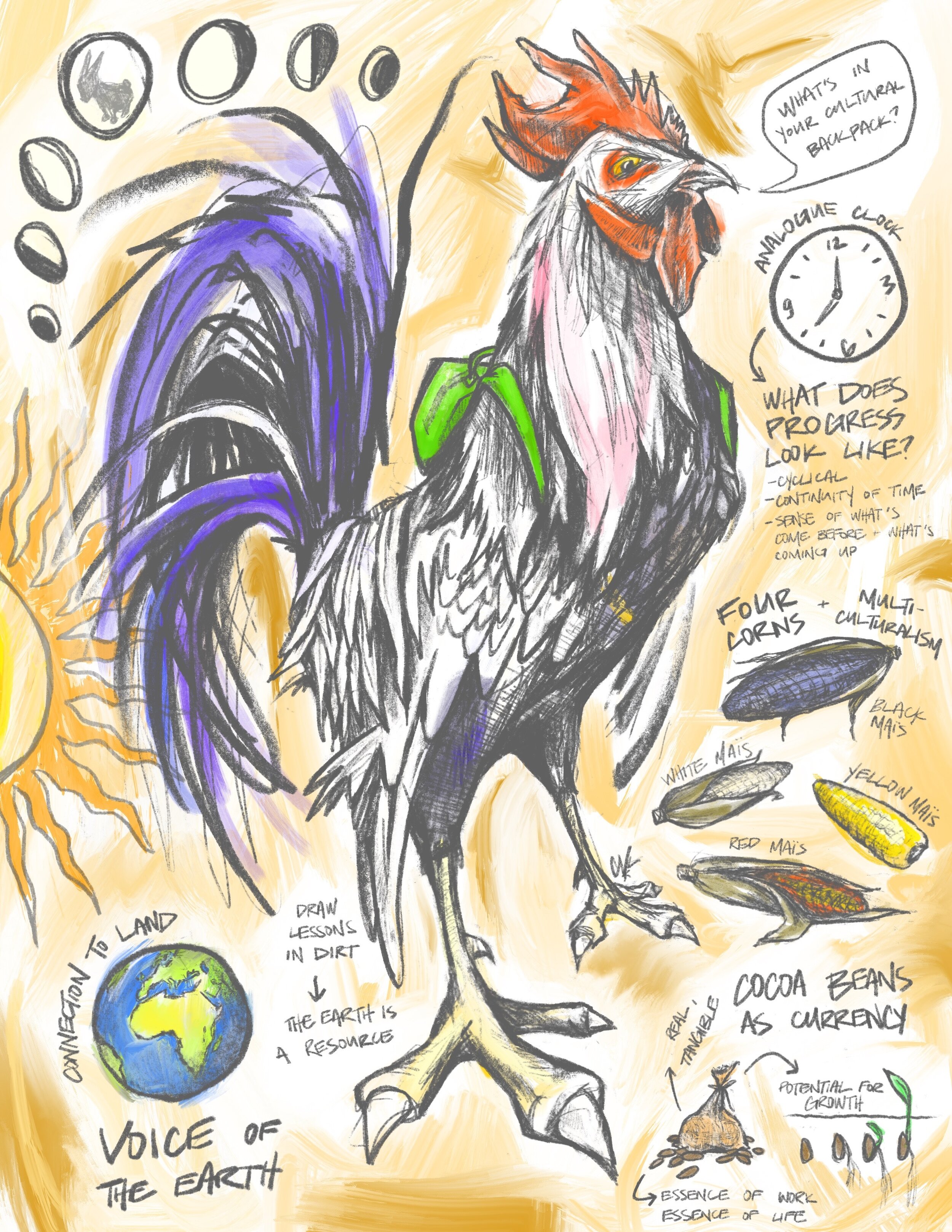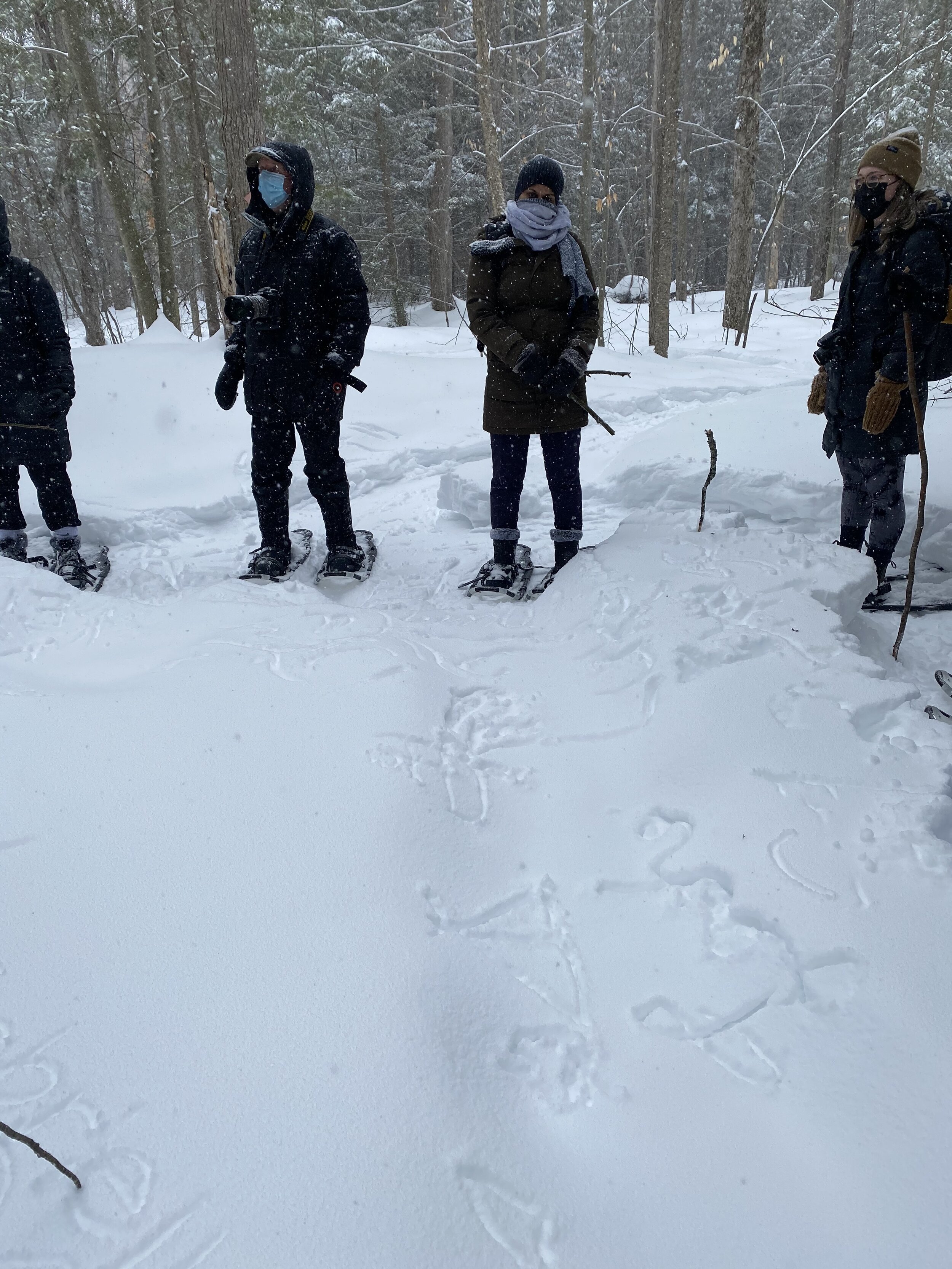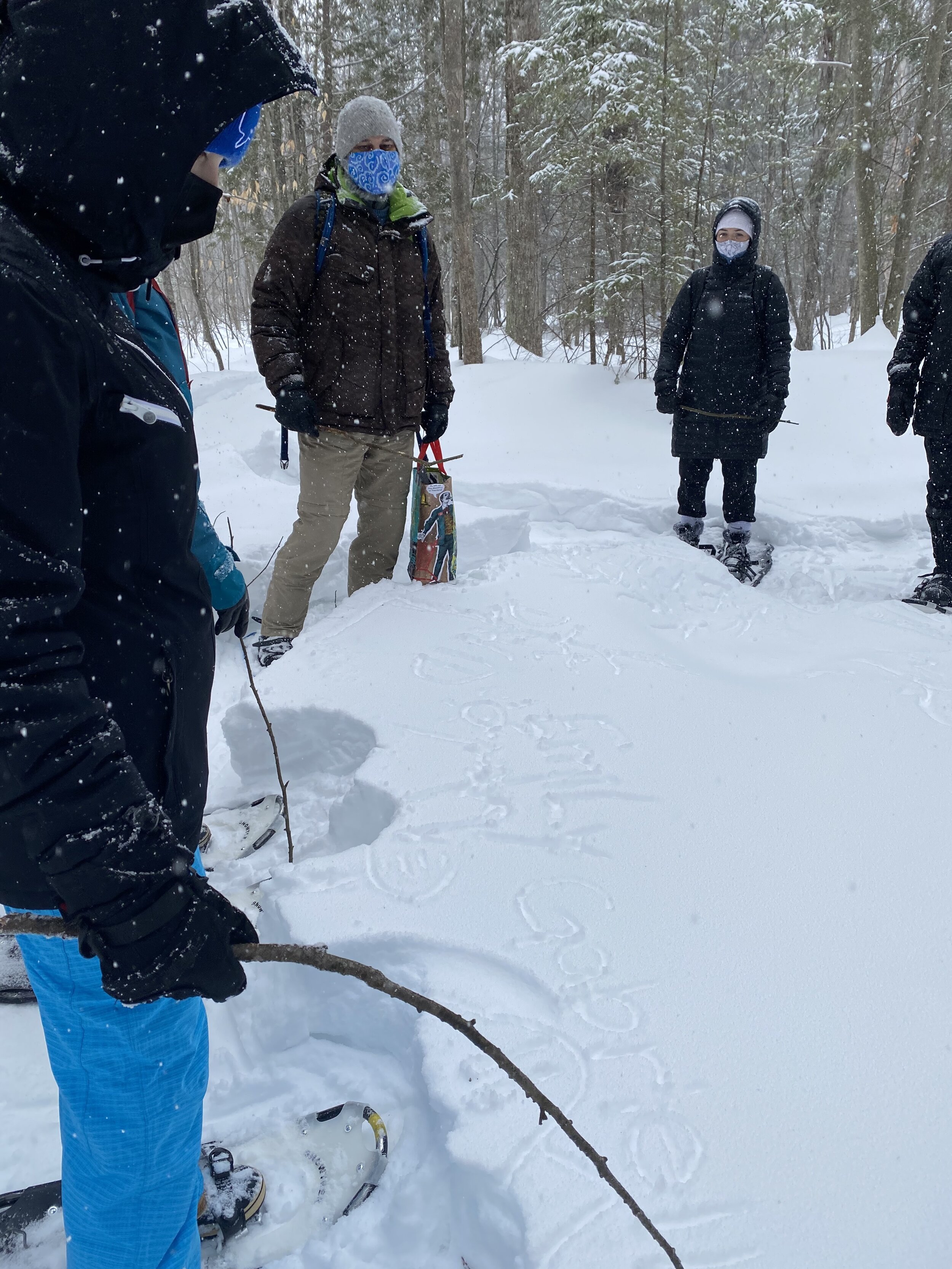A handful of my teachers college colleagues and I attended a (COVID-compliant!) field trip to the MacSkimming Outdoor Education Centre in the city of Ottawa’s east end. This outing consisted of a guided 2km trek through the bush on snowshoes in some of the loosest, deepest powder I’ve ever stepped foot! There was a strong emphasis on observational skills and using the land and nature as a teaching resource. Not just for biodiversity studies/science - but across areas like math, physical education, visual art and more! The ephemeral nature of learning and creating and adding a physical, tangible element to the lessons (feeling how deep the snow is, the chill in your toes, exerting yourself through the walk) actually lights up different areas in the brain to deepen understanding. We picked up sticks to draw in the snow with, and later described to each other what we noticed about those sticks, what we wondered and what those sticks reminded us of. With the recent push for social-emotional learning within school curriculums, this outing provided the perfect opportunity to get outside, get some fresh air, reconnect with nature, meditate and reflect. We must keep in mind that many students do not engage in any more physical activity that what we provide them with, so even though we we’re huffing and puffing in our masks, we were doing something great for our bodies, and inherently our mental health.
We recently had a guest lecturer in our First Nations, Inuit & Métis Education course, Knowledge Keeper Ignacio Torres Ramirez, who spoke about Amatlán, Mexico and taught the stories of the land as teacher for daily and community life. I made many connections between this presentation and our MacSkimming trip. One of the stories from the presentation spoke about rural Mexican education and how teachers in these under-resourced schools often use dirt floors as blackboards. In the name of “progress,” the government created a solid floor program, where they were coming and laying concrete floors pf buildings and homes, causing widespread illness in the south, where people often sleep on floors as they do not have beds. The concrete absorbs moisture which would then affect their lungs. The interpreter, Lisanne Morgan states, “When there was a barrier between the earth and person, illness came.” When rural teachers protested the concrete floors within their schools, they were accused of wanting indigenous children to remain backwards, where having a concrete floor would be considered progress. “If you use a stick and the earth is your blackboard, you can’t do it inside anymore, and you have to go outside. Well, what happens if it’s raining? How are you going to teach? At least inside you can sit on the ground, you can use the dirt as your blackboard and you can learn how to write letters and all kinds of things.”
There was a stop on our trek where we stood in a circle and were asked to write our names in the snow using the stick we had collected. We were also asked to draw an experience of ourselves with nature. We walked around the circle and viewed each participant’s work, knowing that it would be left there in the snow, but that that snow would eventually be covered by more snow, disturbed or melt into the spring. I though this simple exercise was so beautiful, and reminded me so much of the Mexican rural teachers. The drawing posted below was something I created in response to the presentation, which really emphasizes the use of land/nature as a teaching resource.
“What does progress look like when you’re going backwards, how can you start to explain a so called backwards progress? […] We need to think about progress as cyclical, which means that you once in a while have to start going back in order to go forward.”





